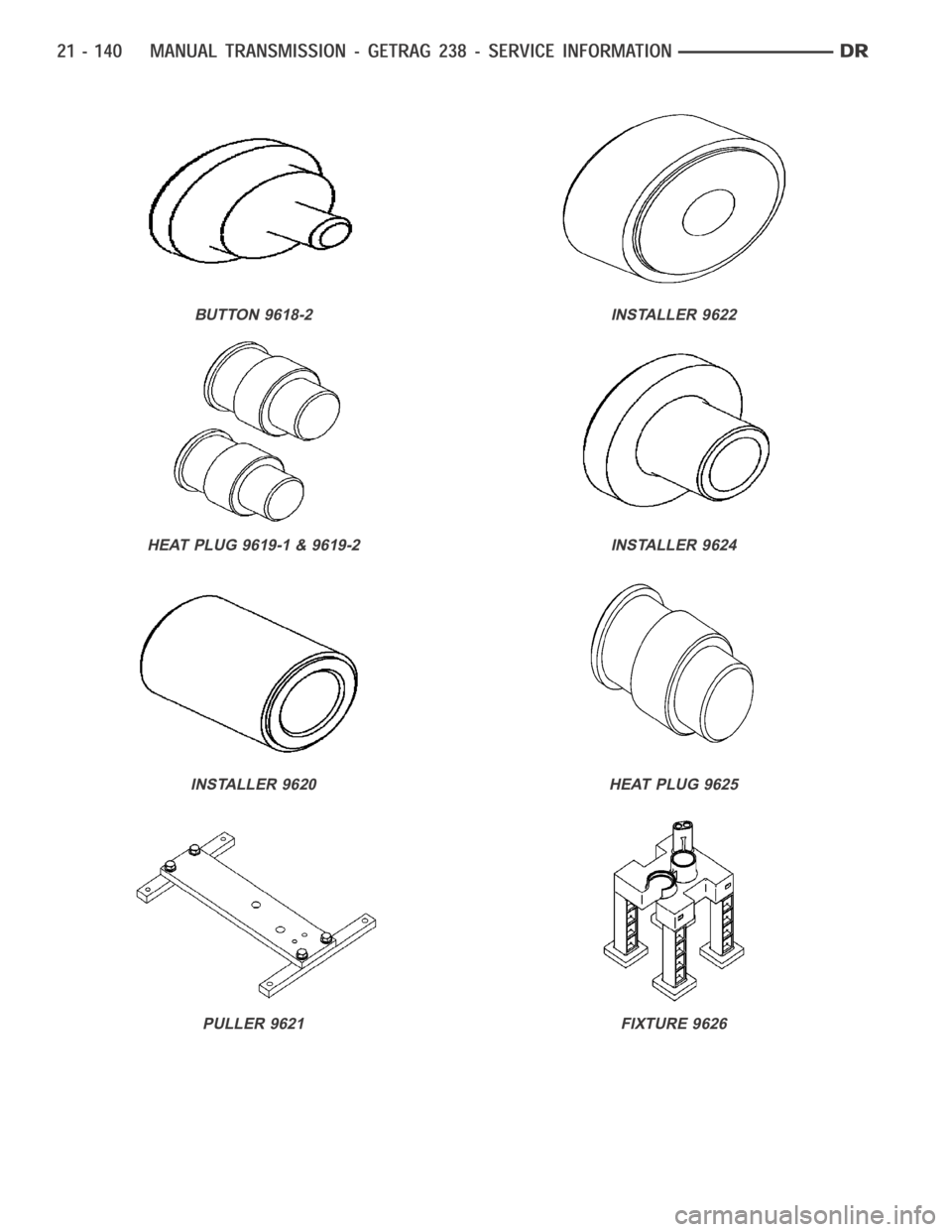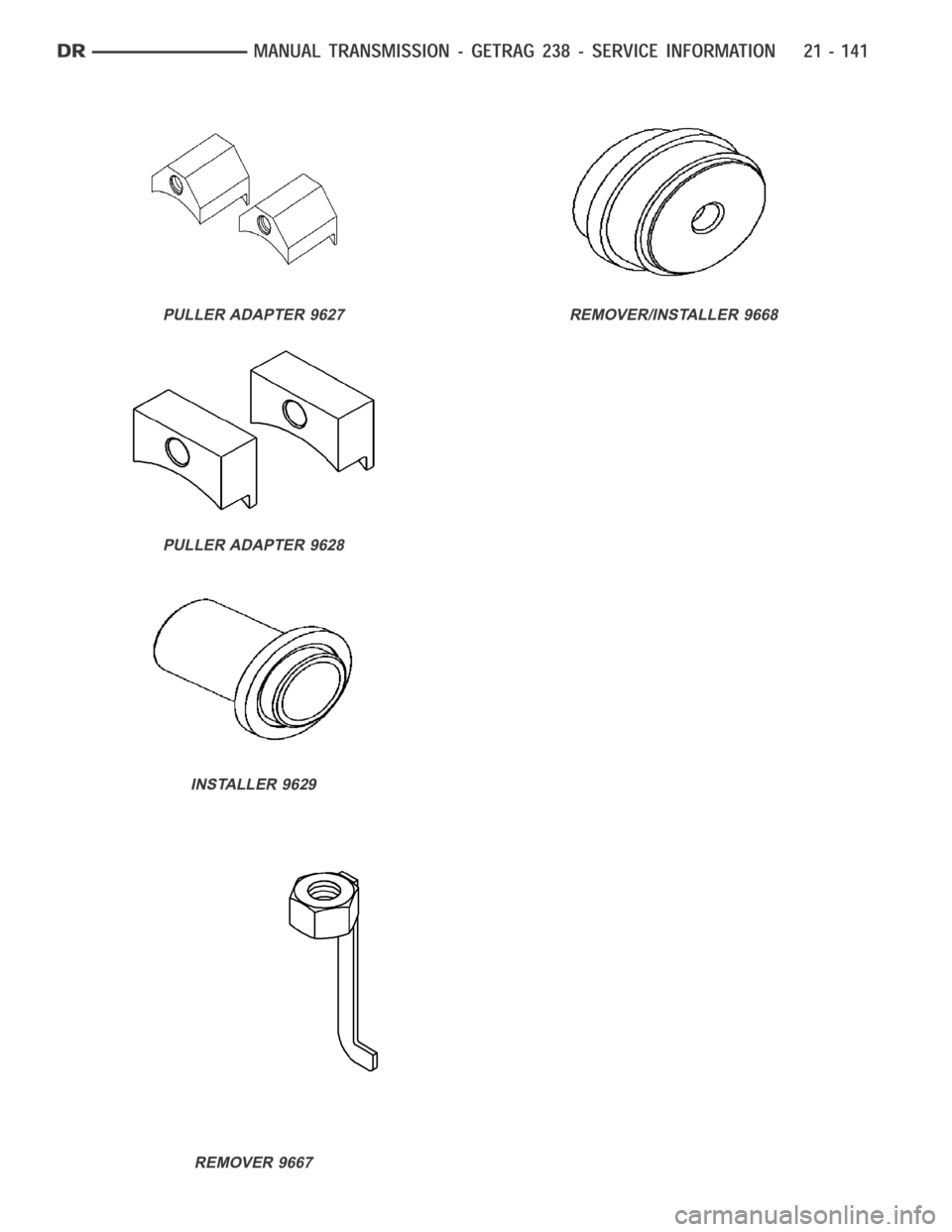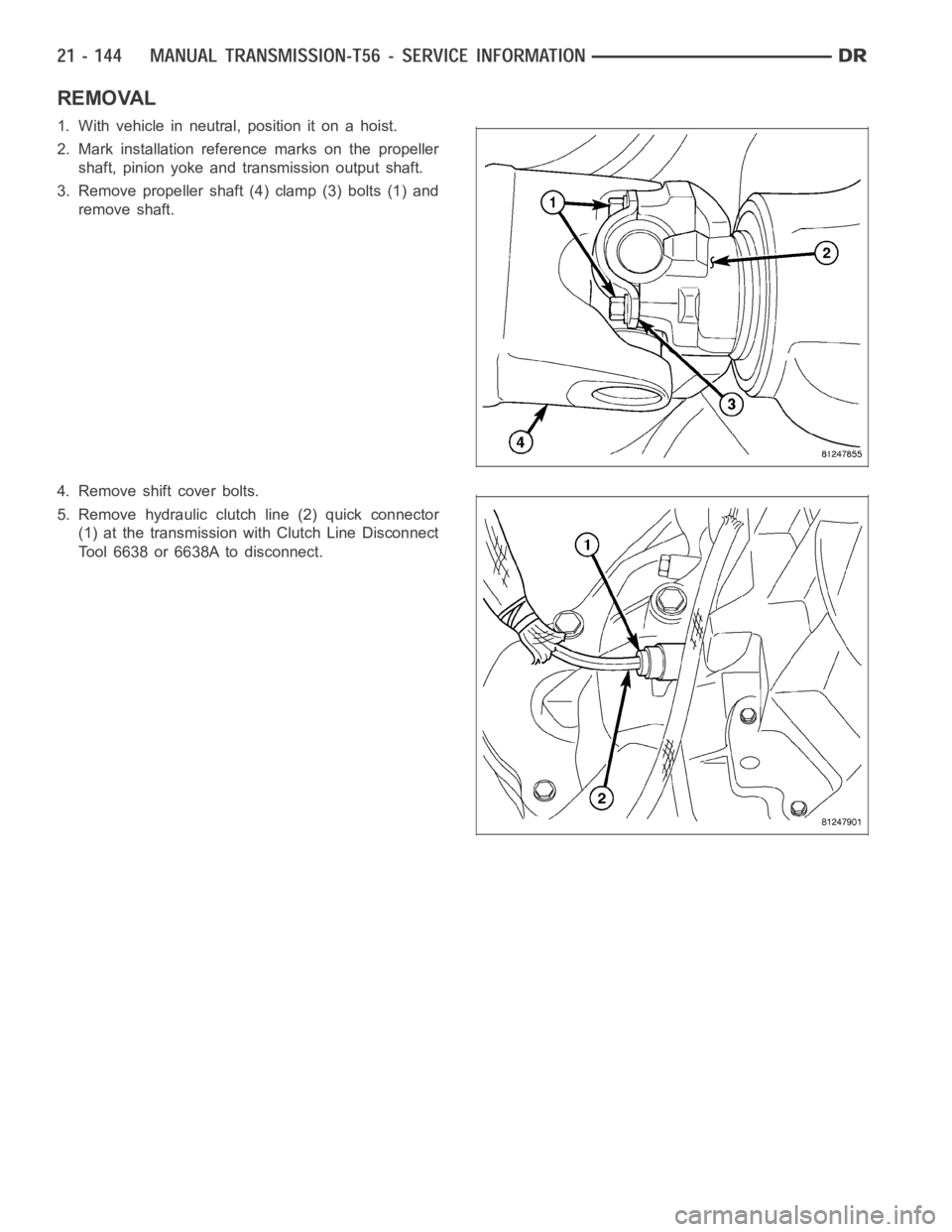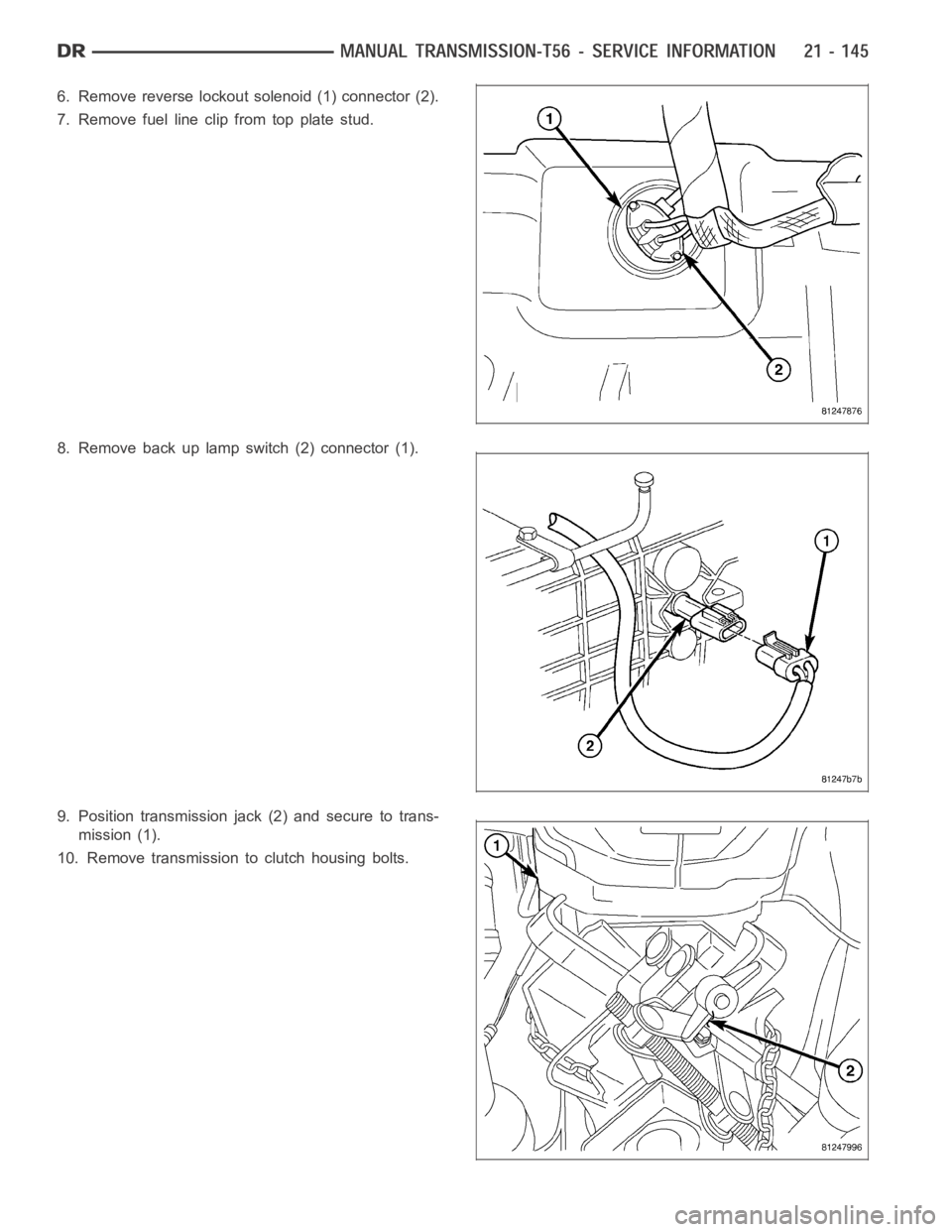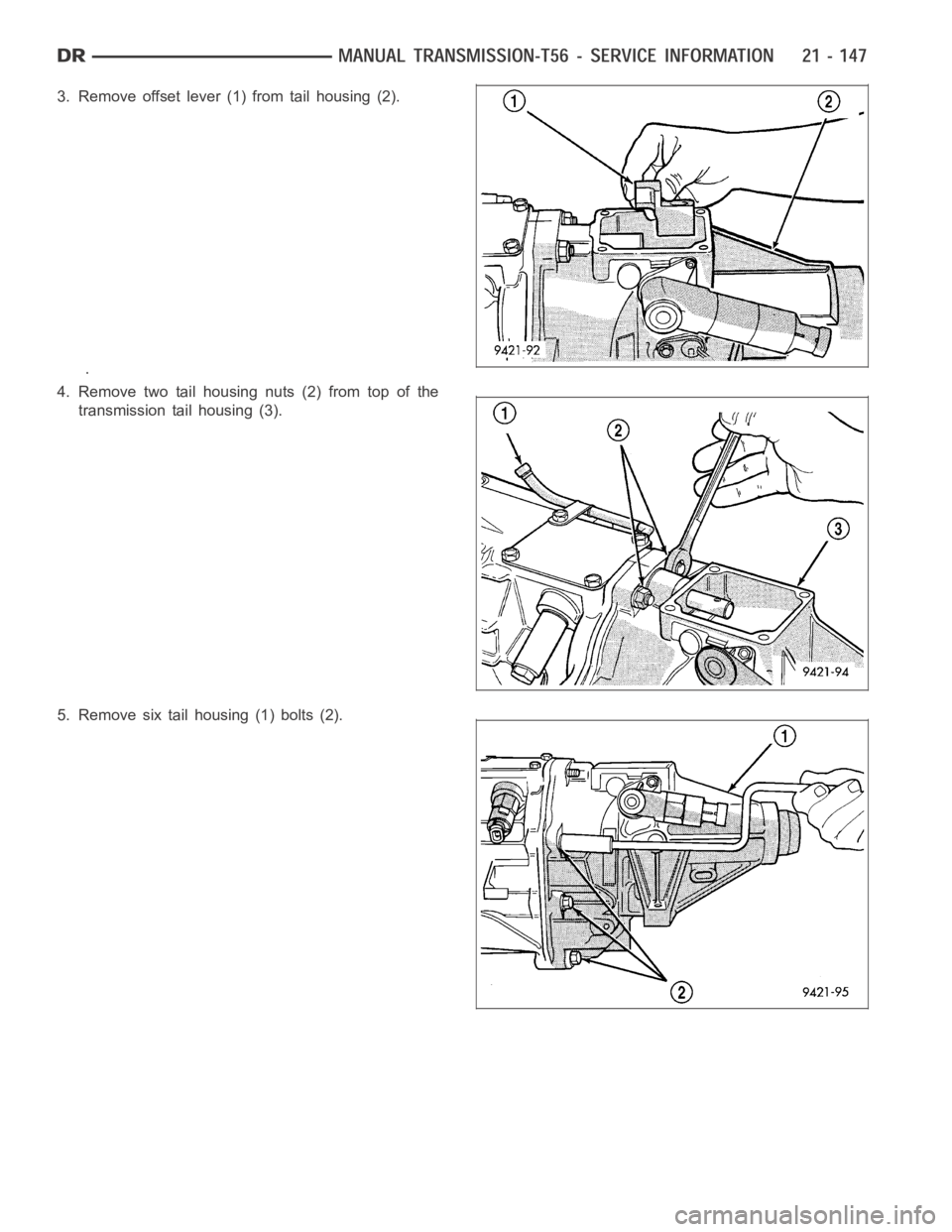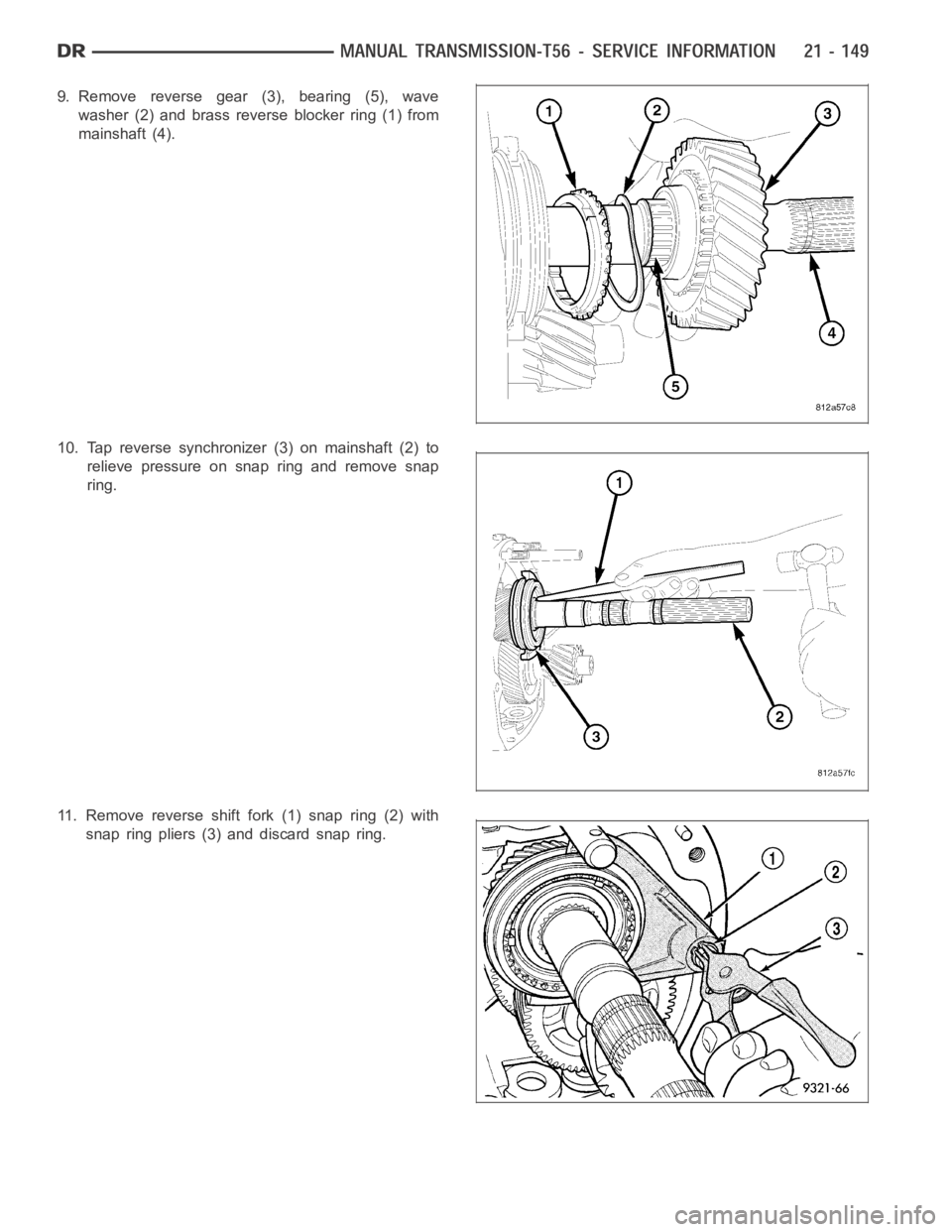DODGE RAM SRT-10 2006 Service Repair Manual
RAM SRT-10 2006
DODGE
DODGE
https://www.carmanualsonline.info/img/12/56917/w960_56917-0.png
DODGE RAM SRT-10 2006 Service Repair Manual
Trending: wipers, headrest, brake fluid, radiator, fuel, center console, run flat
Page 2661 of 5267
BUTTON 9618-2
HEAT PLUG 9619-1 & 9619-2
INSTALLER 9620
PULLER 9621
INSTALLER 9622
INSTALLER 9624
HEAT PLUG 9625
FIXTURE 9626
Page 2662 of 5267
PULLER ADAPTER 9627
PULLER ADAPTER 9628
INSTALLER 9629
REMOVER 9667
REMOVER/INSTALLER 9668
Page 2663 of 5267
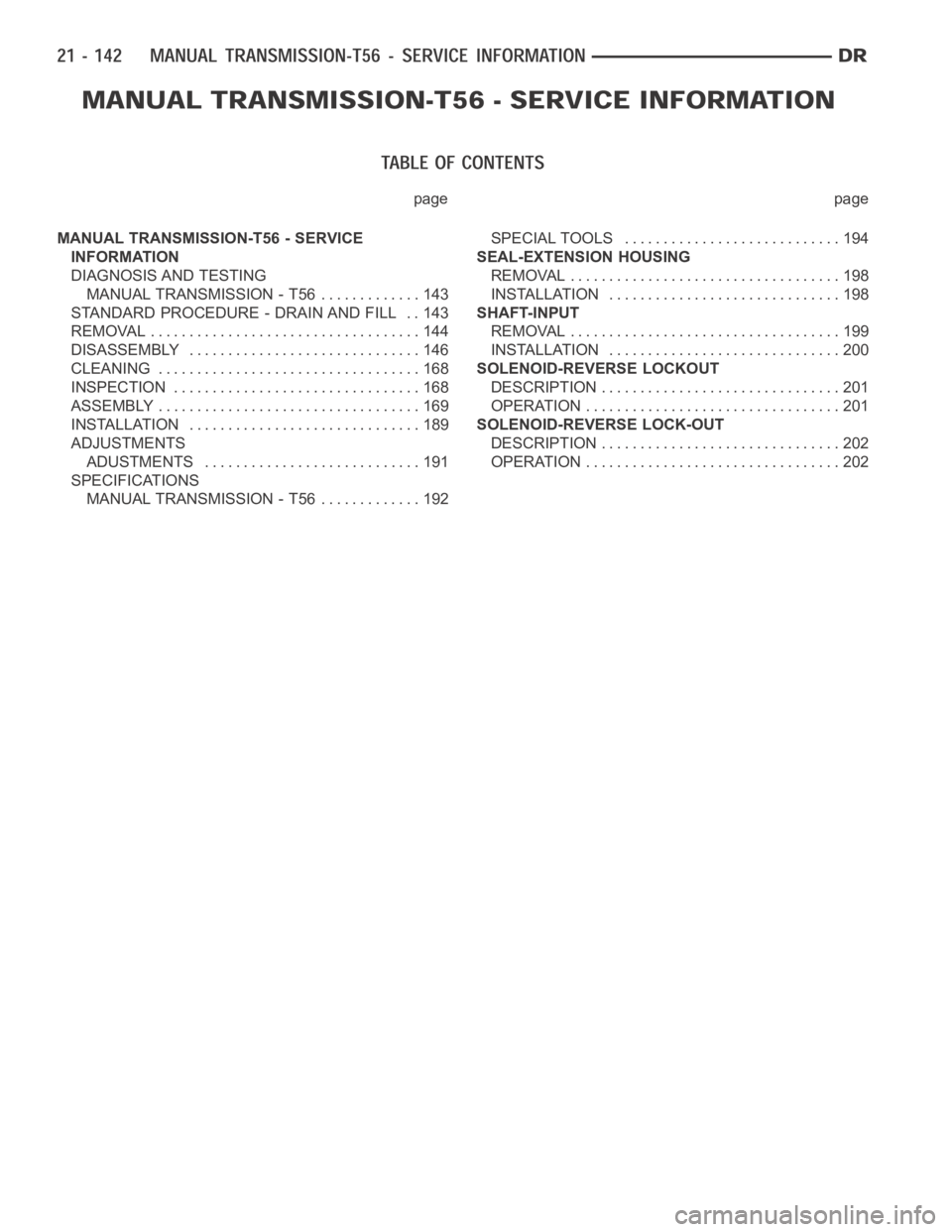
page page
MANUAL TRANSMISSION-T56 - SERVICE
INFORMATION
DIAGNOSIS AND TESTING
MANUAL TRANSMISSION - T56 ............. 143
STANDARD PROCEDURE - DRAIN AND FILL . . 143
REMOVAL ................................... 144
DISASSEMBLY .............................. 146
CLEANING .................................. 168
INSPECTION ................................ 168
ASSEMBLY .................................. 169
INSTALLATION .............................. 189
ADJUSTMENTS
ADUSTMENTS ............................ 191
SPECIFICATIONS
MANUAL TRANSMISSION - T56 ............. 192SPECIAL TOOLS ............................ 194
SEAL-EXTENSION HOUSING
REMOVAL ................................... 198
INSTALLATION .............................. 198
SHAFT-INPUT
REMOVAL ................................... 199
INSTALLATION .............................. 200
SOLENOID-REVERSE LOCKOUT
DESCRIPTION ............................... 201
OPERATION ................................. 201
SOLENOID-REVERSE LOCK-OUT
DESCRIPTION ............................... 202
OPERATION ................................. 202
Page 2664 of 5267
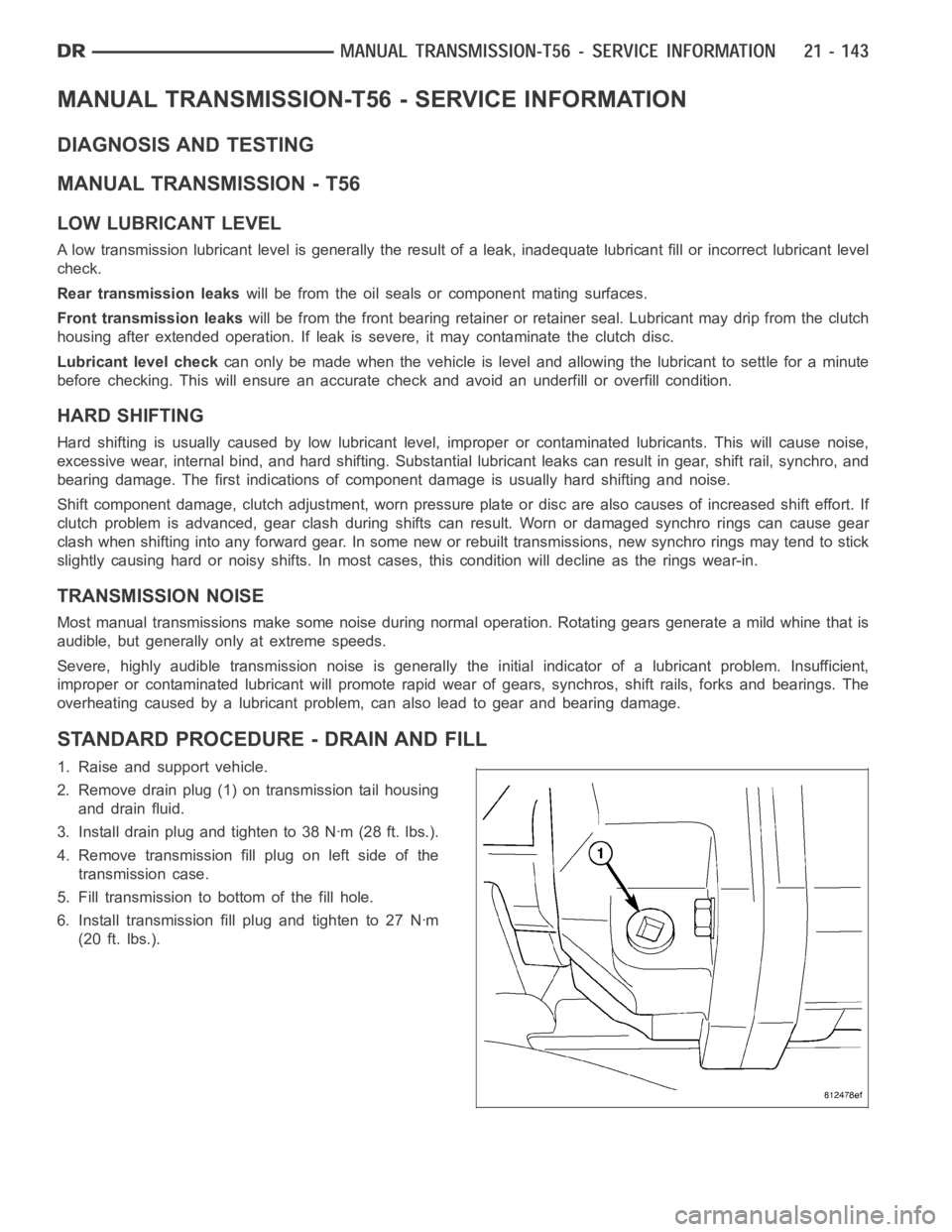
MANUAL TRANSMISSION-T56 - SERVICE INFORMATION
DIAGNOSIS AND TESTING
MANUAL TRANSMISSION - T56
LOW LUBRICANT LEVEL
A low transmission lubricant level is generally the result of a leak, inadequate lubricant fill or incorrect lubricant level
check.
Rear transmission leakswill be from the oil seals or component mating surfaces.
Front transmission leakswill be from the front bearing retainer or retainer seal. Lubricant may dripfromtheclutch
housing after extended operation. If leak is severe, it may contaminate the clutch disc.
Lubricant level checkcan only be made when the vehicle is level and allowing the lubricant to settle for a minute
before checking. This will ensure an accurate check and avoid an underfillor overfill condition.
HARD SHIFTING
Hard shifting is usually caused by low lubricant level, improper or contaminated lubricants. This will cause noise,
excessive wear, internal bind, and hard shifting. Substantial lubricantleaks can result in gear, shift rail, synchro, and
bearing damage. The first indications of component damage is usually hardshifting and noise.
Shift component damage, clutch adjustment, worn pressure plate or disc are also causes of increased shift effort. If
clutch problem is advanced, gear clash during shifts can result. Worn or damaged synchro rings can cause gear
clash when shifting into any forward gear. In some new or rebuilt transmissions, new synchro rings may tend to stick
slightly causing hard or noisy shifts. In most cases, this condition will decline as the rings wear-in.
TRANSMISSION NOISE
Most manual transmissions make some noise during normal operation. Rotating gears generate a mild whine that is
audible, but generally only at extreme speeds.
Severe, highly audible transmission noise is generally the initial indicator of a lubricant problem. Insufficient,
improper or contaminated lubricant will promote rapid wear of gears, synchros, shift rails, forks and bearings. The
overheating caused by a lubricant problem, can also lead to gear and bearing damage.
STANDARD PROCEDURE - DRAIN AND FILL
1. Raise and support vehicle.
2. Remove drain plug (1) on transmission tail housing
and drain fluid.
3. Install drain plug and tighten to 38 Nꞏm (28 ft. lbs.).
4. Remove transmission fill plug on left side of the
transmission case.
5. Fill transmission to bottom of the fill hole.
6. Install transmission fill plug and tighten to 27 Nꞏm
(20 ft. lbs.).
Page 2665 of 5267
REMOVAL
1. With vehicle in neutral, position it on a hoist.
2. Mark installation reference marks on the propeller
shaft, pinion yoke and transmission output shaft.
3. Remove propeller shaft (4) clamp (3) bolts (1) and
remove shaft.
4. Remove shift cover bolts.
5. Remove hydraulic clutch line (2) quick connector
(1) at the transmission with Clutch Line Disconnect
Tool 6638 or 6638A to disconnect.
Page 2666 of 5267
6. Remove reverse lockout solenoid (1) connector (2).
7. Remove fuel line clipfrom top plate stud.
8. Remove back up lamp switch (2) connector (1).
9. Position transmission jack (2) and secure to trans-
mission (1).
10. Remove transmission to clutch housing bolts.
Page 2667 of 5267
11. Remove transmission mount (2) bolts (1).
12. Remove transmission crossmember (2) bolts (1).
13. Slide transmission back to clear the bell housing.
Then lower transmission.
DISASSEMBLY
1. Remove shift cover bolts and remove shift cover.
2. Remove roll pin from rear offset lever (3) with a
hammer (1) and punch (2).
Page 2668 of 5267
3. Remove offset lever (1) from tail housing (2).
.
4. Remove two tail housing nuts (2) from top of the
transmission tail housing (3).
5. Remove six tail housing (1) bolts (2).
Page 2669 of 5267
6. Pry tail housing (1) off case at pry points (2) (4)
only.
7. Remove mainshaft (3) roller bearing snap ring,
roller bearing (4) and spacers (2).
8. Remove reverse gear (1) snap ring (4) and thrust
washer (2) from mainshaft.
Page 2670 of 5267
9. Remove reverse gear (3), bearing (5), wave
washer (2) and brass reverse blocker ring (1) from
mainshaft (4).
10. Tap reverse synchronizer (3) on mainshaft (2) to
relieve pressure on snap ring and remove snap
ring.
11. Remove reverse shift fork (1) snap ring (2) with
snap ring pliers (3) and discard snap ring.
Trending: coolant capacity, parking brake, service schedule, service indicator, load capacity, OBD port, wiring diagram
